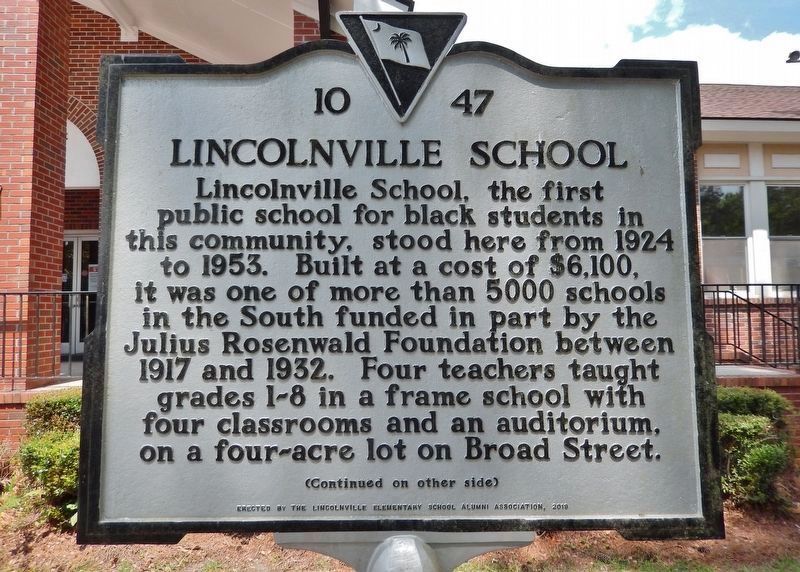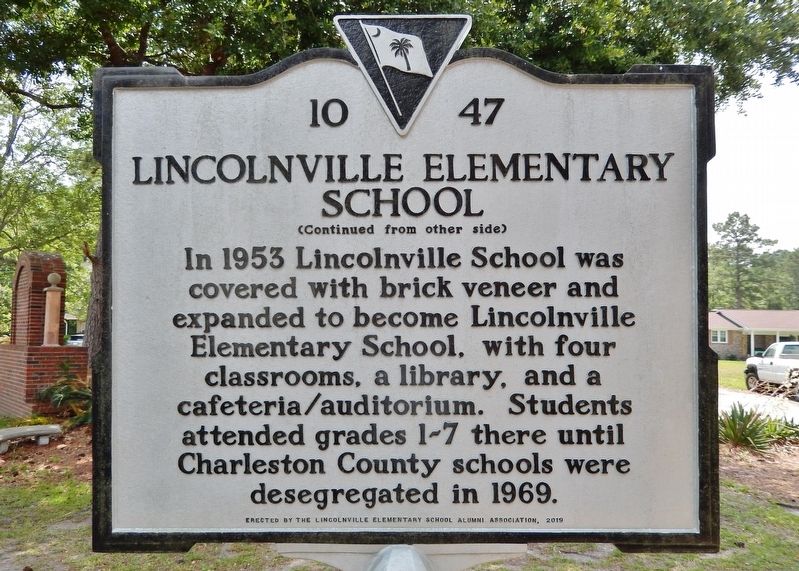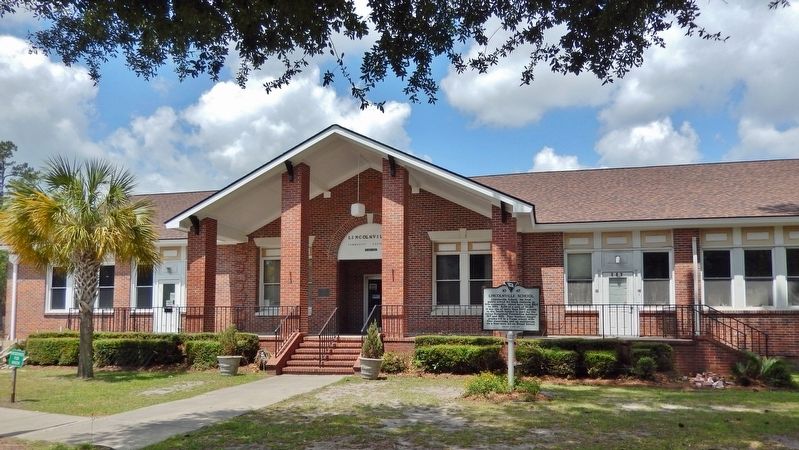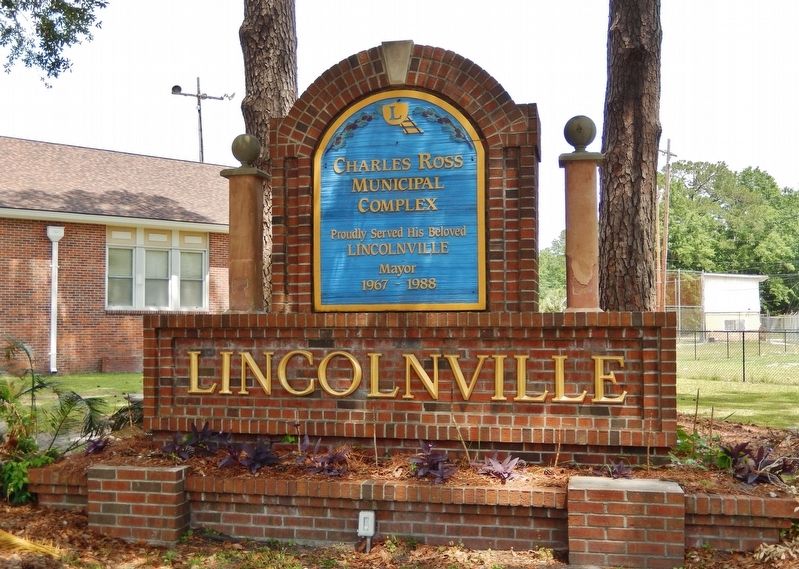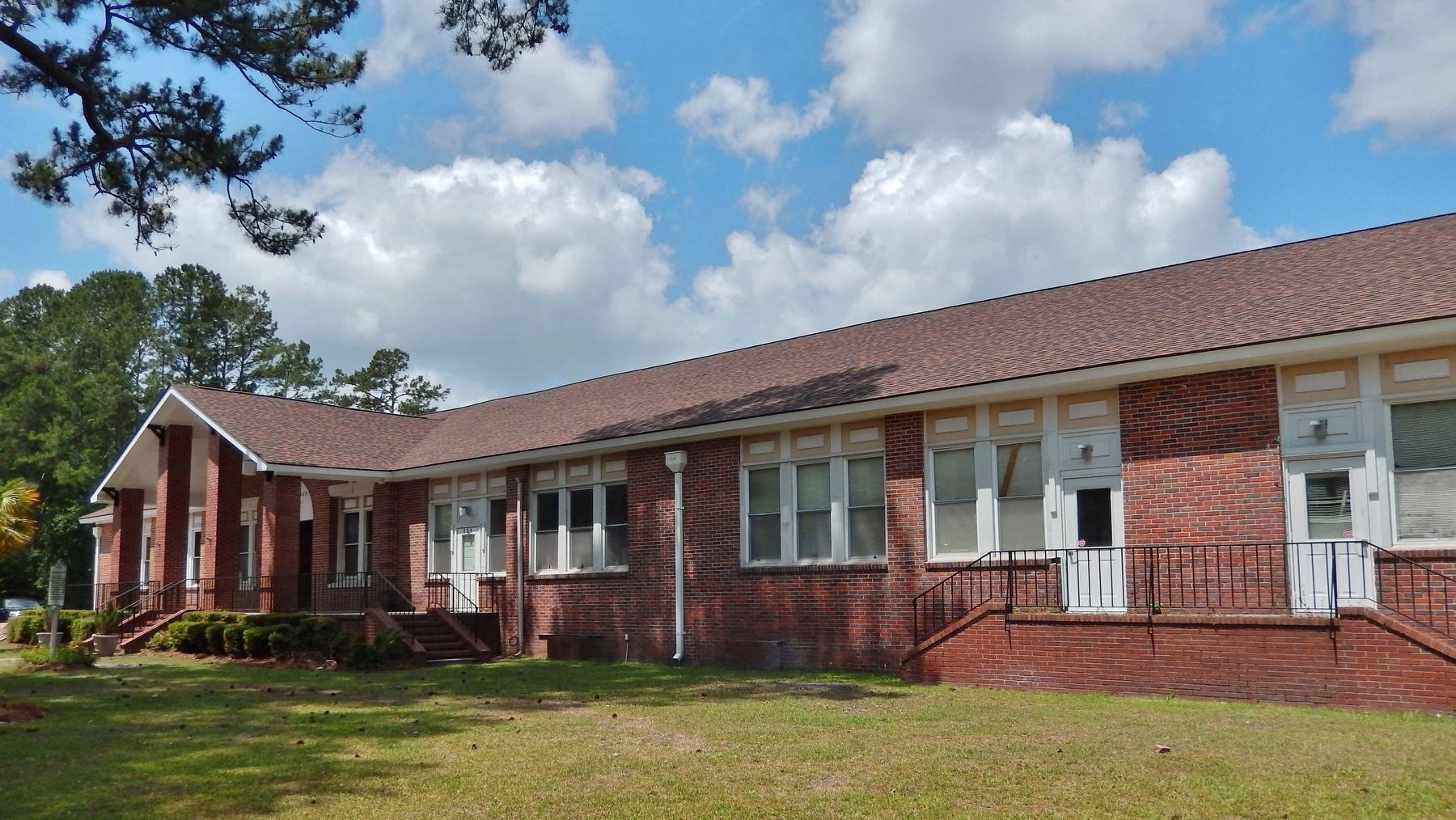Lincolnville in Charleston County, South Carolina — The American South (South Atlantic)
Lincolnville School / Lincolnville Elementary School
Erected 2019 by Lincolnville Elementary School Alumni Association. (Marker Number 10-47.)
Topics and series. This historical marker is listed in these topic lists: African Americans • Architecture • Education. In addition, it is included in the Rosenwald Schools series list. A significant historical year for this entry is 1924.
Location. 33° 0.544′ N, 80° 9.517′ W. Marker is in Lincolnville, South Carolina, in Charleston County. Marker is on West Broad Street just north of West Carolina Avenue, on the right when traveling south. Located directly in front of the Lincolnville Town Office. Touch for map. Marker is at or near this postal address: 141 W Broad St, Summerville SC 29485, United States of America. Touch for directions.
Other nearby markers. At least 8 other markers are within 2 miles of this marker, measured as the crow flies. The Axtell Dam at Sawmill Branch (approx. one mile away); Mayor Berlin G. Myers (approx. 1.2 miles away); Guerin's Pharmacy (approx. 1.2 miles away); Jewish Life (approx. 1.3 miles away); Summerville Memorial Stadium (approx. 1.3 miles away); Coach John McKissick and his wife, Joan (approx. 1.3 miles away); Summerville High School / Coach John McKissick (1926-2019) (approx. 1.3 miles away); Alston Graded School / Alston High School (approx. 1.4 miles away).
Also see . . .
1. The Founding of Lincolnville, SC.
In 1867, seven men, headed by Richard Harvey Cain, an AME minister, took a ride on the South Carolina Special, a local train. They were looking for sites that the South Carolina Railway Company wanted to sell. These seven Black men purchased Six hundred, twenty acres of land for $1000 from the South Carolina Railway Company. These acres of land would become the Town of Lincolnville.(Submitted on May 19, 2023, by Cosmos Mariner of Cape Canaveral, Florida.)
2. Lincolnville's first African American public school.
The Town of Lincolnville in Charleston County is a historically African American community. Descendants of the original settlers still thrive here today amongst the schools, churches, cemeteries, and homes established by their ancestors, while actively preserving their rich Gullah Geechee heritage and celebrating their ancestors' ability to overcome adversity during Reconstruction.(Submitted on May 19, 2023, by Cosmos Mariner of Cape Canaveral, Florida.)
3. Julius Rosenwald Foundation.
The rural school building program for African-American children was one of the largest programs administered by the Rosenwald Fund. Over $4.4 million in matching funds stimulated construction of more than 5,000 one-room schools (and larger ones), as well as shops and teachers' homes, mostly in the South, where public schools were segregated and black schools had been chronically underfunded. This was particularly so after disenfranchisement of most blacks from the political system in southern states at the turn of the 20th century.(Submitted on May 19, 2023, by Cosmos Mariner of Cape Canaveral, Florida.)
Credits. This page was last revised on July 16, 2023. It was originally submitted on May 19, 2023, by Cosmos Mariner of Cape Canaveral, Florida. This page has been viewed 484 times since then and 52 times this year. Photos: 1, 2, 3, 4, 5. submitted on May 19, 2023, by Cosmos Mariner of Cape Canaveral, Florida.
